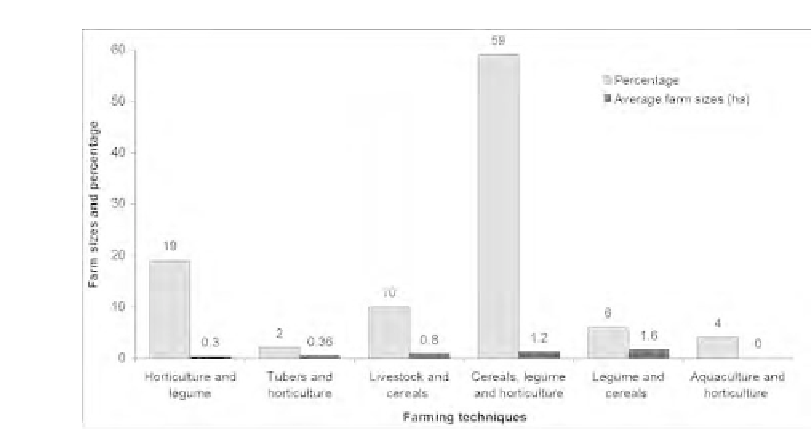Agriculture Reference
In-Depth Information
Figure 12.1 Distribution of farm sizes and techniques in Zaria's urban area
undertaken in water reservoirs and major rivers and livestock was raised
largely on the outskirts of the city. However, cereal crops and legumes were
grown everywhere except where agricultural controls were strictly enforced.
In Zaria, urban farmers typically cultivated more than one crop, as shown
in Figure 12.1. The figure also shows the various size of the farm in relation to
the crops grown. Approximately 60 per cent of the respondents planted
cereals and legumes and also practised horticulture, whereas only about 2 per
cent planted tubers and also practised horticulture.
Cereals are a staple food item in northern Nigeria as well as in the
savannah, which accounts for their popularity with farmers. The frequency of
horticulture among urban farmers can be attributed to natural factors such as
climate, soils and the availability of floodplains. In addition, many low- and
medium-density residential areas in Zaria have large open spaces, which are
suitable for horticulture. Consumer demand was found to be an important
factor in the farming practices in Nigeria.
Desire for urban space for agriculture
Respondents were asked whether they would like to have more space for
farming and what would be their preferred way of farming. In Zaria, urban
farmers expressed a strong desire to farm and stated that they will probably
continue to do so in the future. Many farmers see UA as a critical part of their
livelihoods and as a long-term livelihood strategy. Their interest in it is
attributed to inconsistent food prices or to the poor system of food
distribution in Nigeria. Therefore, farming helps ensure food security in those
areas where income levels are low and while inflation is increasing. Other
reasons for its popularity include cheap and available labour, access to
agricultural inputs, as well as easy access to markets where produce is sold -








